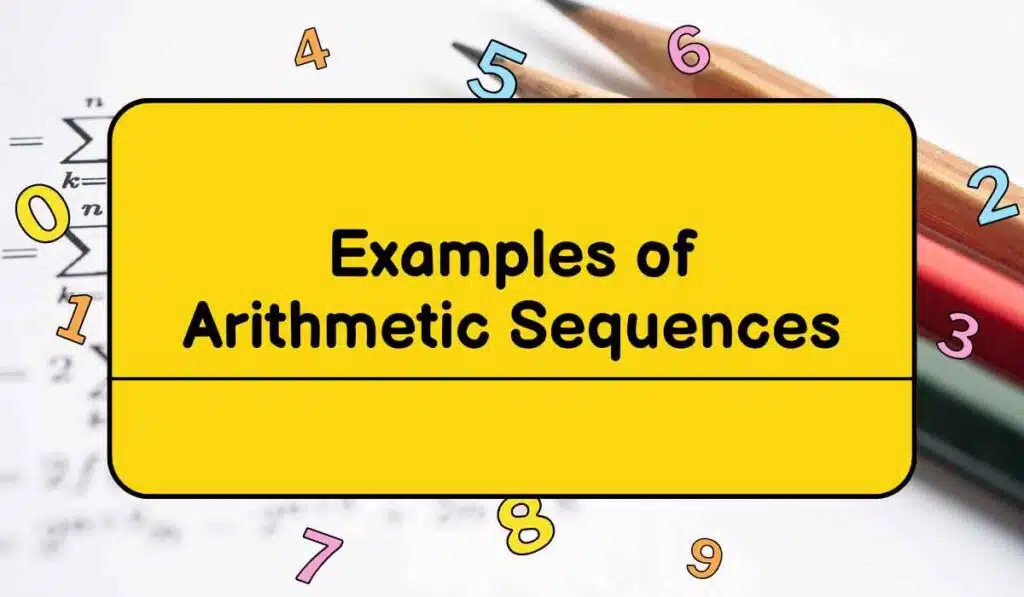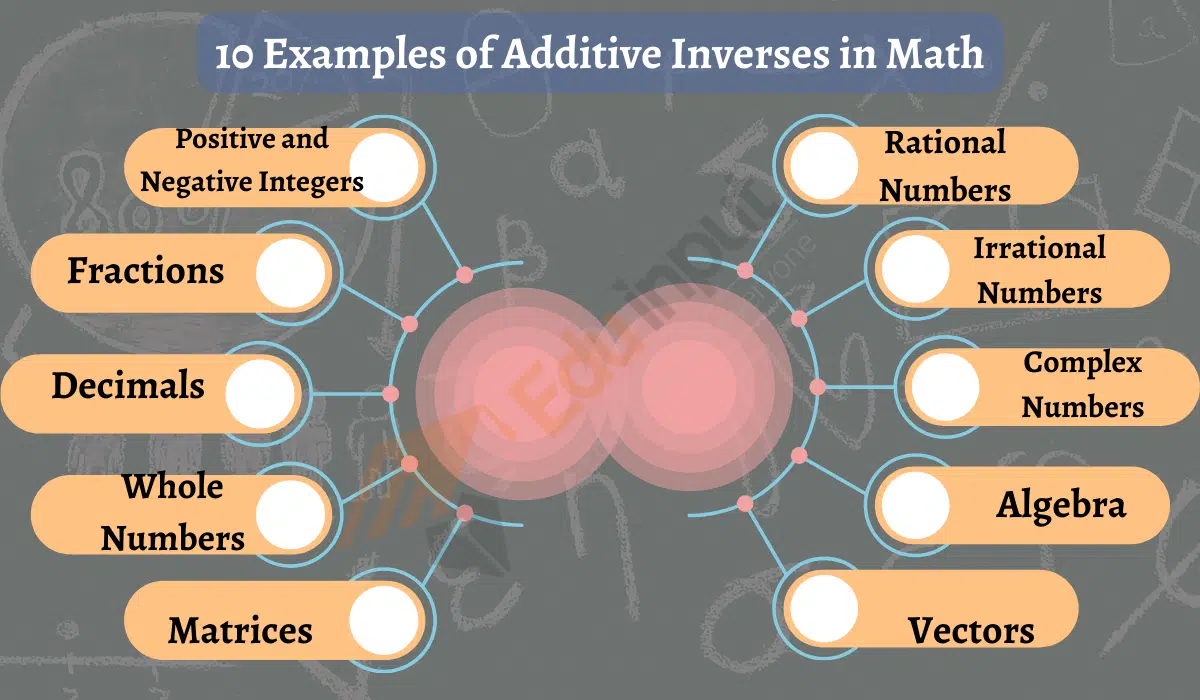10 Examples of Arithmetic Sequences in Math
An arithmetic sequence, also known as an arithmetic progression, is a sequence of numbers in which each term after the first is obtained by adding a constant difference to the previous term.
This constant difference is denoted as ‘d.’ The general form of an arithmetic sequence is:
a, a+d, a+2d, a+3d, …
Here, ‘a’ represents the first term of the sequence, and ‘d’ is the common difference between consecutive terms.
In this article we will discuss Examples of Arithmetic sequences in Math.
Examples of Arithmetic Sequences
These are 10 examples of arithmetic sequences.

1: Counting numbers:
The sequence of natural numbers 1, 2, 3, 4… is an arithmetic sequence with a first term of 1 and a common difference of 1.
2: Even or odd integers:
The even integers 2, 4, 6, 8… form an arithmetic sequence with a1=2 and d=2. Similarly, the odd integers 1, 3, 5, 7… are an arithmetic sequence with a1=1 and d=2.
3: Multiples of a number:
Multiples of any number form an arithmetic sequence. For example, multiples of 5 are 5, 10, 15, 20… This has a1=5 and d=5.
4: Arithmetic sequence of fractions:
Fractions can also form arithmetic sequences, like 1/2, 1, 3/2, 2, 5/2… Here a1=1/2 and d=1/2.
5: Decimals Arithmetic Sequence:
0.1, 0.3, 0.5, 0.7, 0.9, …
In this sequence, the common difference (d) is 0.2. Each term is obtained by adding 0.2 to the previous term.
6: Sequence with negative common difference:
An arithmetic sequence can also have a negative common difference, like 10, 7, 4, 1… which has a1=10 and d=-3.
7: Arithmetic sequence word problems:
Word problems commonly involve arithmetic sequences, like finding a term in a sequence representing the seating capacity of a theater.
8: Fibonacci sequence:
While not strictly an arithmetic sequence, the famous Fibonacci sequence 1, 1, 2, 3, 5, 8… arises from starting with two 1’s and adding the two prior terms to generate the next one.
9: Financial Applications
Arithmetic sequences are useful in finance for modeling regular deposits, withdrawals, loan payments, etc. For example, deposits of $100, $200, $300, $400 etc. into a savings account form an arithmetic sequence.
10: Recurrence Relations
Many recurrence relations in mathematics generate arithmetic sequences. For example, the Fibonacci sequence 1, 1, 2, 3, 5, 8, … satisfies the recurrence Fn = Fn-1 + Fn-2.
Recognizing and comprehending arithmetic sequences is a valuable skill. When you can spot patterns and determine the common difference, you gain the ability to mathematically represent numerous real-life scenarios.
FAQS
How do you find the nth term of an arithmetic sequence?
Use the formula an = a1 + (n-1)d, where an is the nth term, a1 is the first term, n is the term number, and d is the common difference.
How do you find the common difference of an arithmetic sequence?
Subtract any term from the term before it. The result is the common difference.
How do you determine if a sequence is arithmetic?
Check that the difference between consecutive terms is constant. If it is, the sequence is arithmetic.
Can an arithmetic sequence have a common difference of 0?
Yes, if the sequence has the same number repeated over and over.






Leave a Reply